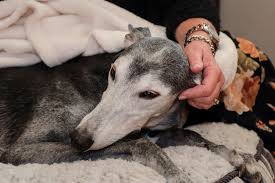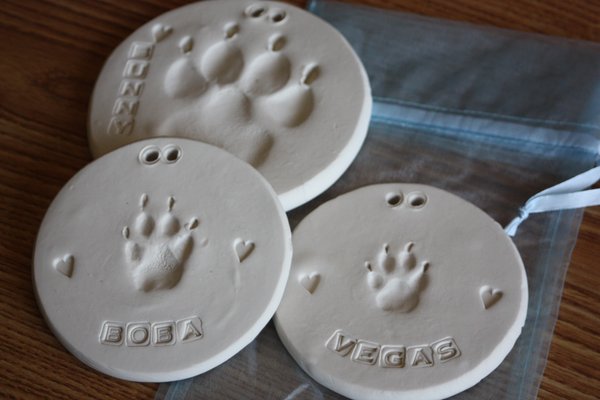|
EUTHANASIA
 Unfortunately, the lifespan of our furry friends is very short compared to ourselves. Large breed dogs are usually considered elderly at 12-15 years; giant breeds at 10. Smaller breeds live longer, and sometimes cats will make it to 20 years and beyond. This often means that we may have to make a decision regarding the quality of your pet's life as he ages. Rather than prolonging suffering once your pet is failing to enjoy life and has no hope of a meaningful recovery, the most humane act that you can permit for your pet is euthanasia, the gift of freedom from his pain and discomfort. Unfortunately, the lifespan of our furry friends is very short compared to ourselves. Large breed dogs are usually considered elderly at 12-15 years; giant breeds at 10. Smaller breeds live longer, and sometimes cats will make it to 20 years and beyond. This often means that we may have to make a decision regarding the quality of your pet's life as he ages. Rather than prolonging suffering once your pet is failing to enjoy life and has no hope of a meaningful recovery, the most humane act that you can permit for your pet is euthanasia, the gift of freedom from his pain and discomfort.
We often get the question, "How do I know when it is time?" Each patient is an individual, and his needs and the ability of their owners to care for him properly varies. Although we can advise you as to the options available for treatment and information on the likelihood of recovery, only you can decide for sure when it is time. There are, however, a few guidelines to consider when making your decision. First, does the pet interact with family members? If the answer to this question is no the vast majority of the time, and there is little chance that this will improve with medications, then you have to consider that the pet's quality of life is poor. Second, does the pet get up and around adequately to keep itself clean? We certainly expect that aging pets are no longer active and sleep the vast majority of the time. But if they are unable to navigate adequately and frequently soil themselves and are unable to move away from the mess, this certainly is not quality of life. Third, is the pet eating? Once again, everyone misses a meal part of the time. However, if the pet does not eat the majority of the time, is wasting away, and the outlook for improvement of this situation is bleak, then you should consider euthanasia. Finally, there are many other factors that need to be taken into consideration, such as how the pet's illness affects your quality of life, including your financial ability to adequately care for him.
The next common question is "How is euthanasia performed?" Essentially, an overdose of a concentrated anesthetic is given intravenously. Most animals drift to sleep and their heart and lungs fail very quickly with no reaction on the animal's part. The only painful part is the injection itself, just like any other needle. Sometimes we will place a catheter in the vein to make the injection easier or we may give the pet a sedative to minimize his fear over us handling him. Usually we perform the procedure in our comfort room so that you can be with your pet if you so choose, sitting on the couch or on the floor with him. We can depending on our schedule make housecalls to do it at home (this needs to be scheduled well in advance). Some people choose to be with the pet; others prefer to remember him alive and would rather we do it when they are no longer around. It is a personal choice.
 After the euthanasia has been performed, or if the pet dies at home, you have three choices regarding his body. First, you may take him home for burial. Second, we can perform a cremation, after which we dispose of the ashes. Third, we can perform an individual cremation, after which we return his ashes to you. Because we have our own crematorium, you can be assured that indeed the ashes you receive are those of your pet. We include a wooden urn but we can provide you with premium urns if you desire; we can special order others and cemetery stones are available as well. We also offer a clay paw print that we bake for you with your pet's name imprinted on it as well. Ask a team member for more information or a catalog. After the euthanasia has been performed, or if the pet dies at home, you have three choices regarding his body. First, you may take him home for burial. Second, we can perform a cremation, after which we dispose of the ashes. Third, we can perform an individual cremation, after which we return his ashes to you. Because we have our own crematorium, you can be assured that indeed the ashes you receive are those of your pet. We include a wooden urn but we can provide you with premium urns if you desire; we can special order others and cemetery stones are available as well. We also offer a clay paw print that we bake for you with your pet's name imprinted on it as well. Ask a team member for more information or a catalog.

The grieving process is difficult for many people. This is compounded by the fact that often friends, and even family members, fail to recognize our deep emotional attachments to our pets. They are not just property; they truly are family members that happen to have four legs and a furry body. If you need help handling your grief you may borrow some short books we have on handling the emotions of pet loss, especially for children; and you might want to contact one of the following Pet Loss Support organizations:
Hospice & Palliative Care 574-255-1064 www.centerforhospice.org
Michiana PALS 574-259-6460 MichianaPALS@aol.com
Purdue University Vet School 765-494-1107
Indianapolis Pet Loss 317-251-4028 www.inpetloss.org
Michigan State University Vet School 517-706-0440 cvm.msu.edu/petloss/groups.htm
You can also get information on pet loss support and hospice care at www.veterinarywisdomforpetparents.com and then click on the tab entitled "Veterinary Wisdom Support Center"
MEMORIALS
Many times we make memorial contributions when someone loses a special friend. Typically we will make a monetary donation to the Purdue University School of Veterinary Medicine Development Fund to help them learn new treatment techniques and develop medications to help our four-legged friends. Many times we also donate to our own Benevolent Care Fund which we use to provide treatment to special cases such as injured strays.
| 
